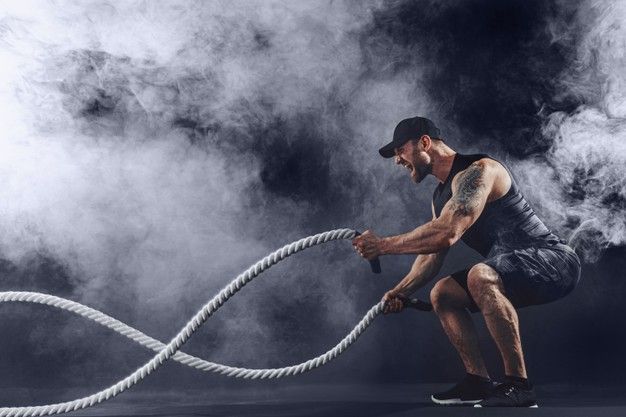Are you looking for the “magic” formula to increase your strength, endurance, and muscle growth without spending endless hours at the gym? Then the High-Intensity, Low-Volume (HILV) training model is exactly what you need.
So today, my friends, we’ll talk about how this training model works, its benefits, and how you can incorporate it into your daily workouts for the best possible results.
What is High Intensity, Low Volume Training?
The HILV model is a method that focuses on fewer sets and repetitions but with increased intensity. Therefore, each set is performed almost to failure, using heavier weights or higher effort. You don’t need countless sets with moderate intensity; instead, you perform 1-3 sets per exercise with 6-10 repetitions, using 80-90% of your 1RM weight. Consequently, this model provides a strong stimulus for your muscle growth while avoiding excessive fatigue
Benefits of High Intensity, Low Volume Training
- Low training volume: You complete your workout in 45-60 minutes, spend less time in the gym, and still see amazing results.
- Maximum muscle activation: High-intensity training forces your body to activate more muscle fibers, leading to faster growth.
- Lower risk of overtraining: With a lower training volume, your body recovers more efficiently, reducing the chances of exhaustion and injuries.
- Increased muscle strength: Performing heavy sets enhances your muscle strength and improves your performance in a shorter period.
- Perfect if you’re short on time: You finish your workout in 45-60 minutes, making it easy to fit into your daily schedule.
How to Apply HILV to Your Training
1️⃣ Choose compound exercises: For maximum performance, do exercises that engage multiple muscle groups simultaneously, such as squats, deadlifts, bench press, pull-ups, and military press.
2️⃣ Add weight: Always aim for 80-90% of your 1RM for each exercise.
3️⃣ Keep training volume low: Perform 1-3 sets per exercise with 6-10 repetitions to maintain high intensity.
4️⃣ Rest properly: Take 2-3 minute breaks between sets for optimal recovery and performance.
5️⃣ Pay attention to technique: Due to the heavy weights you’re using, proper execution is crucial to avoid injuries.
6️⃣ Proper recovery: The most important factor is sufficient sleep, proper nutrition, and hydration for effective progress.

Sample HILV Workout Plan (3 Days a Week)
Day 1: Legs & Back
- Squats – 3×6-8
- Deadlifts – 2×6
- Pull-ups – 3×8
- Romanian Deadlifts – 2×8
Day 2: Chest & Shoulders
- Bench Press – 3×6-8
- Military Press – 3×8
- Dips – 2×8
- Lateral Raises – 2×12
Day 3: Full Body
- Front Squats – 3×6
- Bent-over Rows – 3×8
- Overhead Press – 2×8
- Farmer’s Walk – 2 sets of 30 seconds
Conclusion
The High Intensity, Low Volume model is the “magic” formula you’re looking for to increase your strength and muscle mass without spending your whole day at the gym. If you want to improve your performance and see real and fast results, give it a try.
I’ll be waiting for you to share your experience in the comments below.

